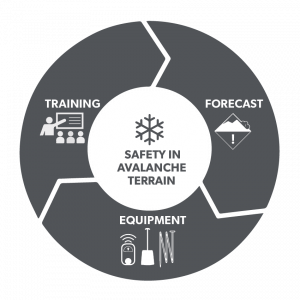What is the NZ Avalanche Advisory?
Welcome to the NZ Avalanche Advisory (NZAA), New Zealand's official backcountry avalanche forecasting network.
The NZAA provides public avalanche advisories for 13 regions across the country. These forecasts, written specifically for recreational users of the backcountry, make up one component of traveling safely in 'avalanche terrain', along with carrying the appropriate rescue equipment and getting the proper training.

What is avalanche terrain?
Avalanche terrain is any terrain or slope in the mountains where an avalanche could occur under the right conditions. The NZAA is all about assessing those conditions and predicting what could happen in avalanche terrain as a result. This potential for avalanches is reflected in the assigned ‘danger rating’ for the forecast.
What are the forecasts for?
These forecasts advise recreational users of avalanche danger in each region. They apply for any type of recreational user that will be in avalanche terrain, such as backcountry skiers/snowboarders, mountaineers, trampers, or hunters.
The forecasts include travel advice, recent avalanche activity, weather and snowpack conditions, and information that assists users in understanding the particular avalanche problems that exist in the region
The avalanche forecasts are not for use by commercial operators, such as ski areas, heli-ski or guiding/instruction companies. Commercial operators should have their own safety management plans and avalanche hazard assessments specific to their needs. The avalanche forecast does not apply to within ski area boundaries as ski areas perform their own avalanche control work to manage the avalanche hazard. These forecasts are for the backcountry areas in our mountains. The backcountry begins as soon as you leave the ski area boundary.
How do I use the forecast?
For a detailed walkthrough of an NZAA forecast, see our NZAA User's Guide. We also have a free Online Avalanche Course that you can work through at your pace to learn the basics of identifying avalanche terrain, learning about different avalanche types, and getting a few tips on rescue techniques. This is a great introduction (not a replacement) of what you’ll get on an in-person, practical Avalanche Awareness or Backcountry Avalanche Course.
- Watch and learn from our video about Snowpack Observations and Warning Signs
- Read our story about Forecasts as one element in Avalanche Safety
Continue your learning
The forecast is just one of three components of avalanche safety. You can find more resources in our Education section. Where we have information on avalanche safety, education and courses available around the country for getting the appropriate training plus some excellent avalanche safety videos to get you started.